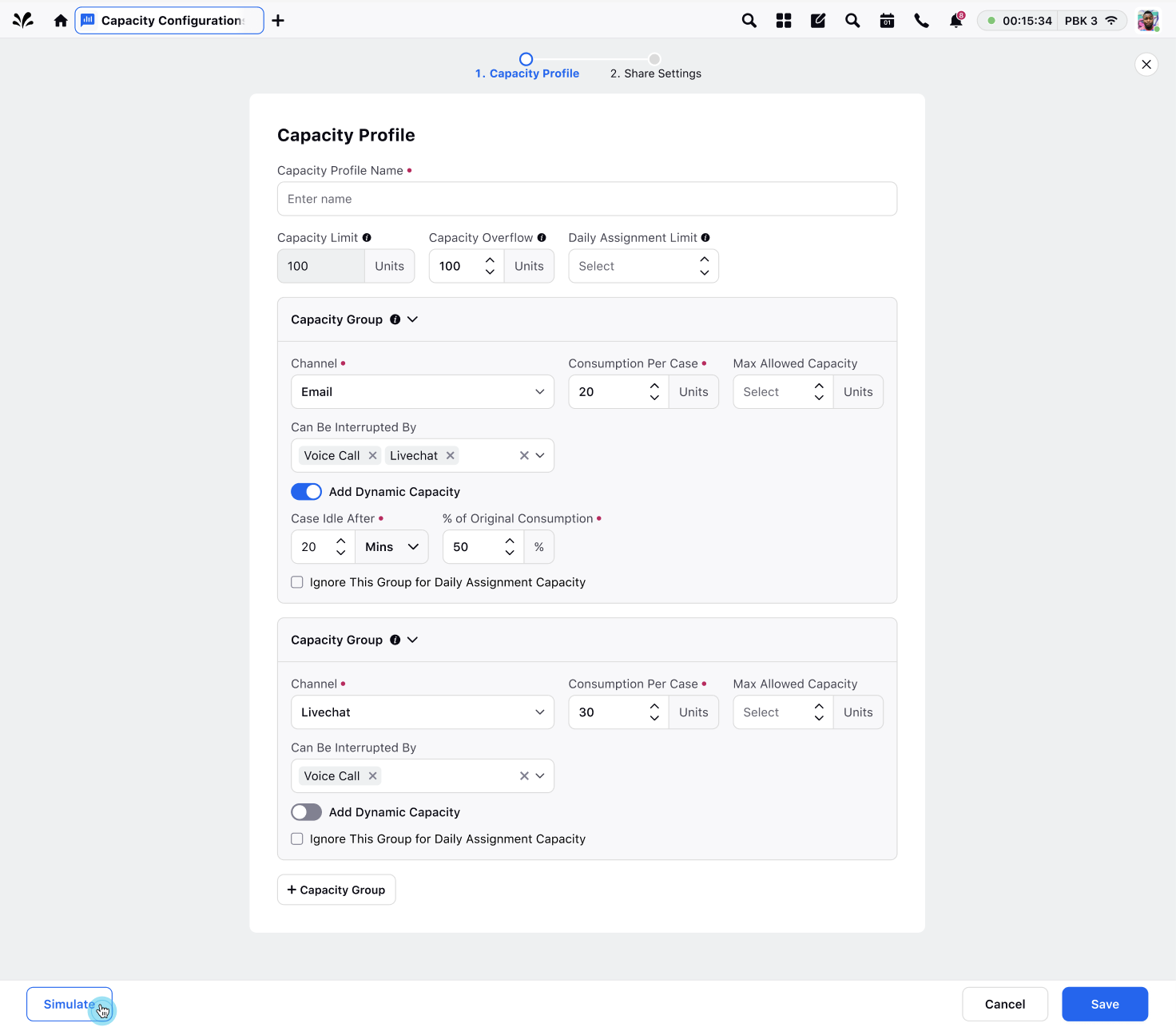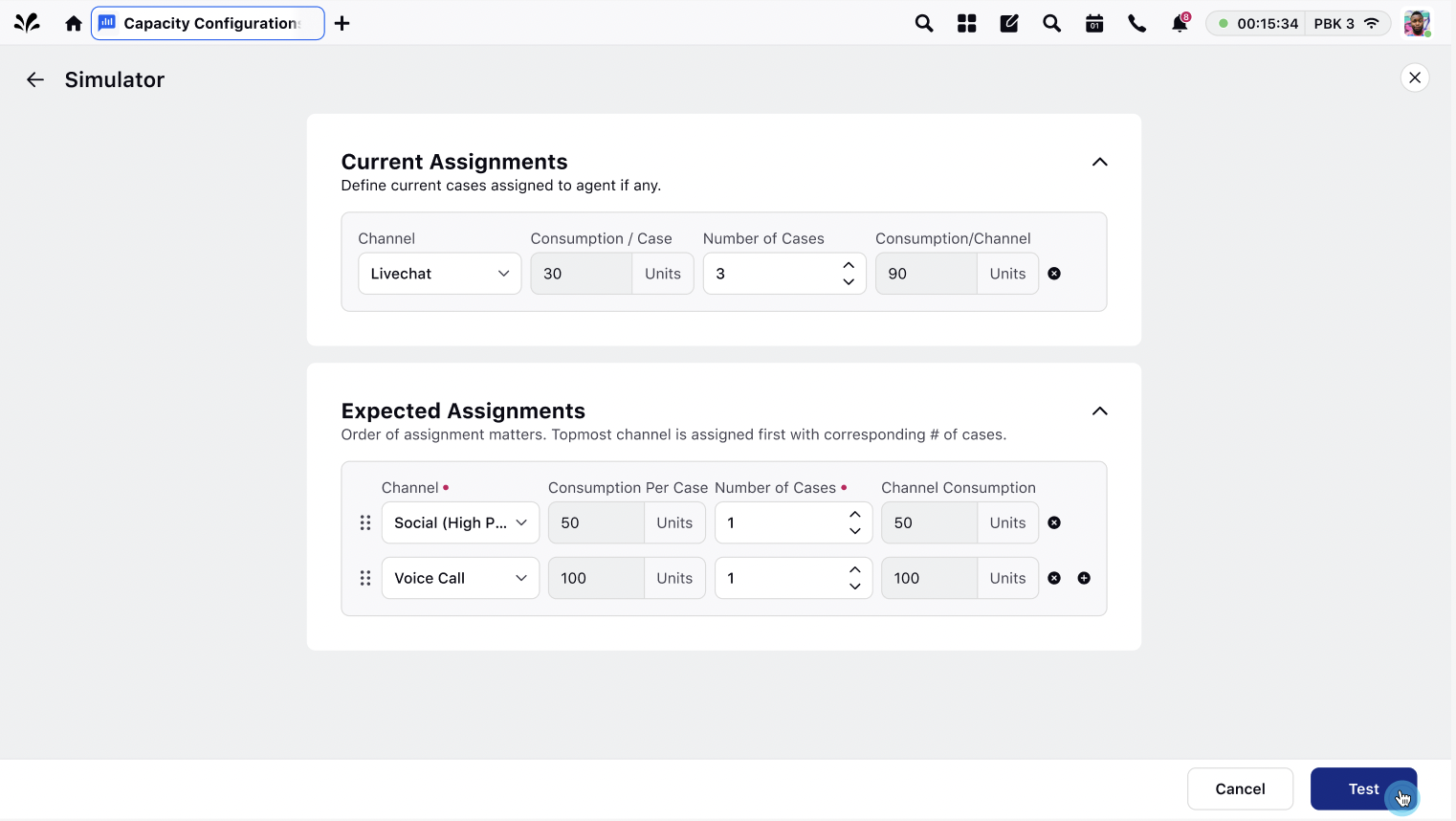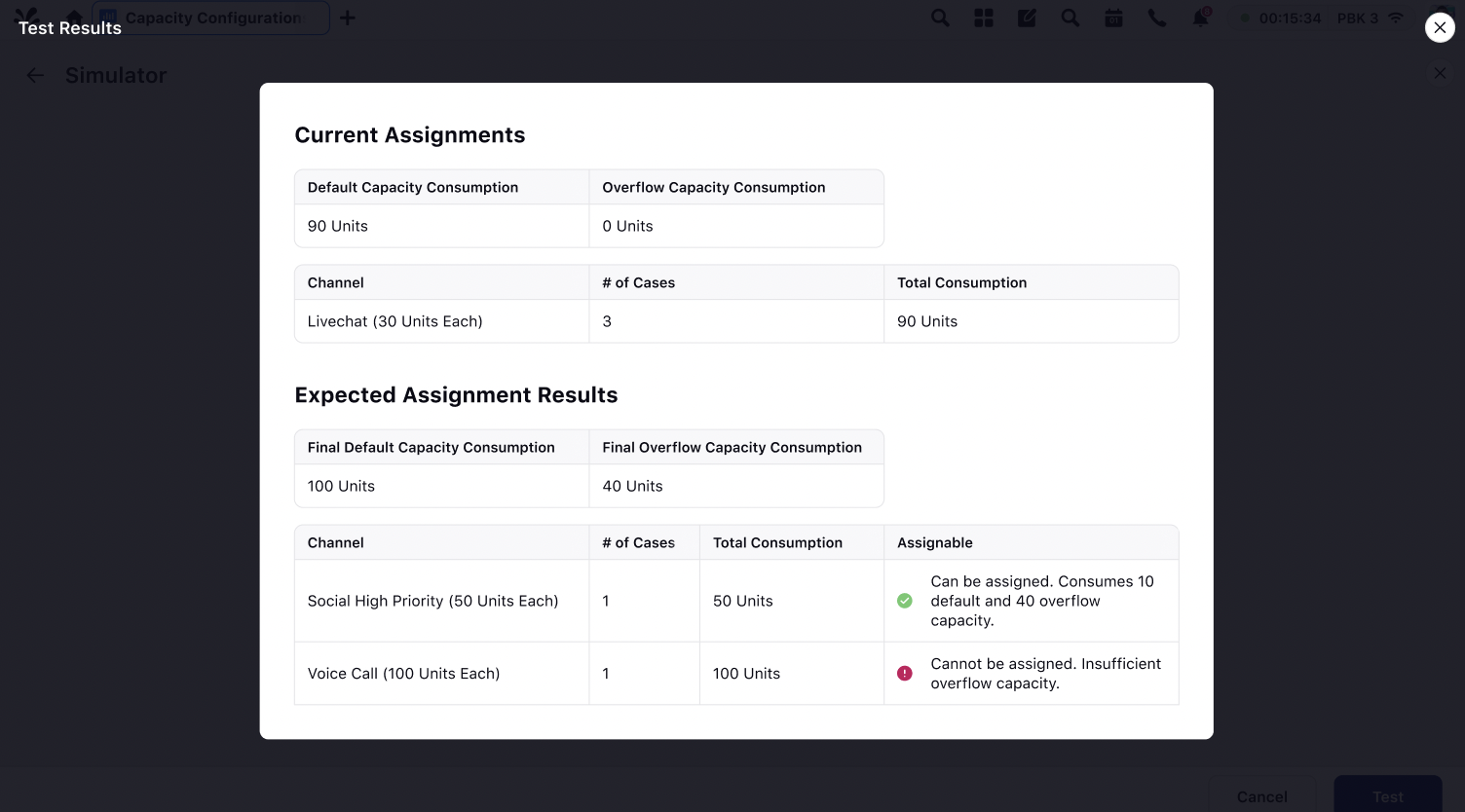Capacity Simulator
Updated
The Unified Routing Capacity Simulator enables administrators and configurators to explore various scenarios concerning case assignments. It offers insights into whether a case will be assigned or not, along with the underlying reasons. Additionally, the simulator aids in understanding advanced use cases like capacity overflow and channel interruption. Its purpose is to reduce configuration errors, ensuring that best practices are implemented and tested before the capacity is deployed live for agent workload distribution.
To Simulate Capacity Assignments and Analyze Results
After configuring the desired capacity settings, click Simulate located at the bottom left corner.

This action opens the Simulator window, where you can define various scenarios related to case assignments within the Current Assignment and Expected Assignments sections. Once scenarios are set, click Test at the bottom right corner.
Current Assignment: Define channels and number of cases that you want to consider already assigned to user before running the simulation. Current assignment can be left blank if no prior assignments to be considered.
Expected Assignments: Specifiy the channels and their number of cases in order of assignments. These are the cases for which you want to see results if they can be assigned or not. For following example in the screenshot, ACD will give results considering Social channel to be assigned first and then Voice Call.

On the Test popup window, you can review the Expected Assignment Results, indicating whether a case will be assigned to an agent based on their current workload and capacity, as well as how many cases would be assigned to them for a given channel, considering their current capacity utilization. Additionally, you can visualize when overflow capacity would be utilized. Furthermore, you can identify reasons why a case will not be assigned, potentially revealing discrepancies in capacity calculations. This insight enables you to address underlying issues and fine-tune your capacity settings for optimal performance.
Here are potential outcomes along with their respective reasons:
Result
Reason
Case Assigned
Assigned using default units.
Case Assigned
Assigned using default units and overflow units.
Case Not ssigned
Insufficient default units and not eligble for overflow units.
Case Not Assigned
Insufficient overflow units.
Case Not Assigned
Maximum allowed capacity for the channel reached.
